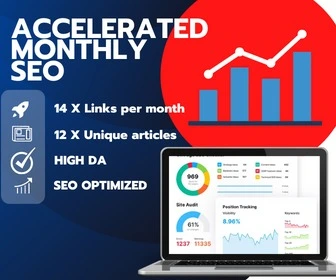In an era where AI tools are accessible to everyone, the real advantage doesn’t come from merely using them—it comes from how strategically you apply them. One of the most high-leverage uses of AI in digital marketing today is expanding your on-site content footprint in a way that drives visibility, authority, and ultimately, sales.
When done well—and at scale—this approach can deliver compound results: broader keyword coverage, stronger topical authority, improved rankings, and a noticeable lift in conversions. But contrary to popular belief, it’s not as simple as typing a single prompt into a chatbot and hoping for SEO success. That shortcut often results in generic content that underperforms or actively weakens your domain’s trust profile.
To generate meaningful impact, you need to start with your own insights, layer in real data, and let AI serve as an amplifier of your expertise—not a substitute for it. When this is scaled across your site with intent, the performance upside can be remarkable.
Start With What You Know

Most websites already have reservoirs of unused knowledge—internal guides, support queries, sales FAQs, case studies, and subject matter expertise that never make it onto landing pages. Before turning to AI, consider this: What have you or your team said over the phone or in email replies that answered real questions better than any blog post you’ve seen?
These bits of insight are gold.
Use AI not to invent something from scratch, but to help elevate and expand what you already know. For example:
-
If your sales team consistently explains why your product integrates better with X software than competitors, that’s a page.
-
If your customer support team answers the same 10 questions every week, those belong in a comprehensive FAQ.
-
If you’ve written in-depth case notes after a client success story, that’s a unique use-case article waiting to happen.
You already own the raw materials. AI can help you turn them into assets.
Move From Topics to Topical Authority
Too often, people use AI to generate one article on a keyword and then move on. That’s a mistake. One of the best ways to build site relevance is through interconnected content that builds topical depth.
Let’s say you offer financial consulting services for eCommerce brands. Instead of just one page on “tax planning for Shopify sellers,” you could expand that footprint into:
-
“How Shopify tax rules differ from Amazon FBA”
-
“Common sales tax pitfalls for eCommerce startups”
-
“Why most eCommerce tax calculators fail at scale”
-
“Real tax-saving strategies from 3 Shopify brand owners”
Each of these pages can internally link to the main guide, creating a spiderweb of value that signals to Google: this brand knows what it’s talking about.
Here’s where AI becomes powerful: not in generating all those pages blindly, but in assisting you with variant angles, subheadings, and data formatting—so your expertise can scale without losing clarity.
Prompting with Purpose: Make the AI Work for You
The quality of AI output is directly tied to the specificity and depth of your input. One of the most overlooked strategies is feeding your own original data or bullet points into the prompt to ground the output in your worldview.
Example:
Bad prompt:
“Write a blog about tax tips for Shopify sellers.”
Useful prompt:
“I advise Shopify clients with $100K–$3M revenue. Many use Stripe and run into issues with 1099-K filings. I’ve also seen confusion around sales tax nexus in NY and CA. Write a guide for them, outlining common mistakes, what I typically recommend, and include a case where a client saved money after restructuring.”
Now the AI has direction. It becomes your assistant, not your ghostwriter. It can rephrase, outline, and even spot gaps you hadn’t considered—but the seed came from you.
Repurpose With Intelligence
Not every piece of content needs to be born from zero. You likely have underused assets already:
-
A video webinar? Turn it into a transcript, then a blog series.
-
A product page? Break out technical specs into comparison tables.
-
A long FAQ? Spin each question into its own landing page with deeper insight.
AI can help extract value from what you’ve already written by summarizing, reformatting, and identifying latent keyword opportunities within it.
You can even prompt AI like this:
“Here is a 2,000-word support article. Identify 5 potential landing pages we can build from this, each focused on a different aspect of the customer problem.”
The Role of Trust and Depth
Shallow AI-generated articles don’t convert. Even if they rank for a time, bounce rates and low engagement quickly signal to search engines that the content lacks depth or usefulness.
To avoid that, ask: What can we say here that no one else can?
This could include:
-
Internal stats or success rates
-
Client testimonials or direct quotes
-
Screenshots of your process
-
Proprietary frameworks
-
A real opinion, even if it risks being polarizing
AI can help structure or expand these points, but it’s up to you to inject the truth that separates fluff from authority.
When your content feels like it’s written by someone who’s been there, visitors are more likely to stay, trust, and convert.
Content That Leads to Sales, Not Just Traffic
Expanding your content footprint isn’t just about filling your sitemap. It’s about building pathways that lead users closer to decisions. Think about how each piece of content supports the buyer’s journey:
-
Awareness: “What are the real costs of hiring a fractional CMO?”
-
Comparison: “In-house vs outsourced CMO: which delivers ROI faster?”
-
Trust: “How we helped 5 startups double their MRR with a part-time CMO”
-
Action: “Schedule a free strategy session — here’s what we’ll cover”
With AI, you can accelerate the outlining and first draft stages, but again, the differentiation comes from your positioning, offers, and results. AI won’t invent those—it just helps you communicate them better, faster, and more comprehensively.
Final Thought: AI is a Multiplier, Not a Creator
Ultimately, AI is a mirror that reflects the quality of your thinking. If you feed it originality, real insight, and a strategy-led mindset, it will reward you with scale and structure. But if you treat it as a shortcut, you’ll just get noise.
To truly expand your on-site content footprint:
-
Start with your expertise
-
Use AI to extend and shape it
-
Back it with real data or examples
-
Build internal links across topics
-
Think of the user’s journey—not just keywords
This is the kind of content that earns rankings, yes—but more importantly, it earns trust. And trust leads to business.







